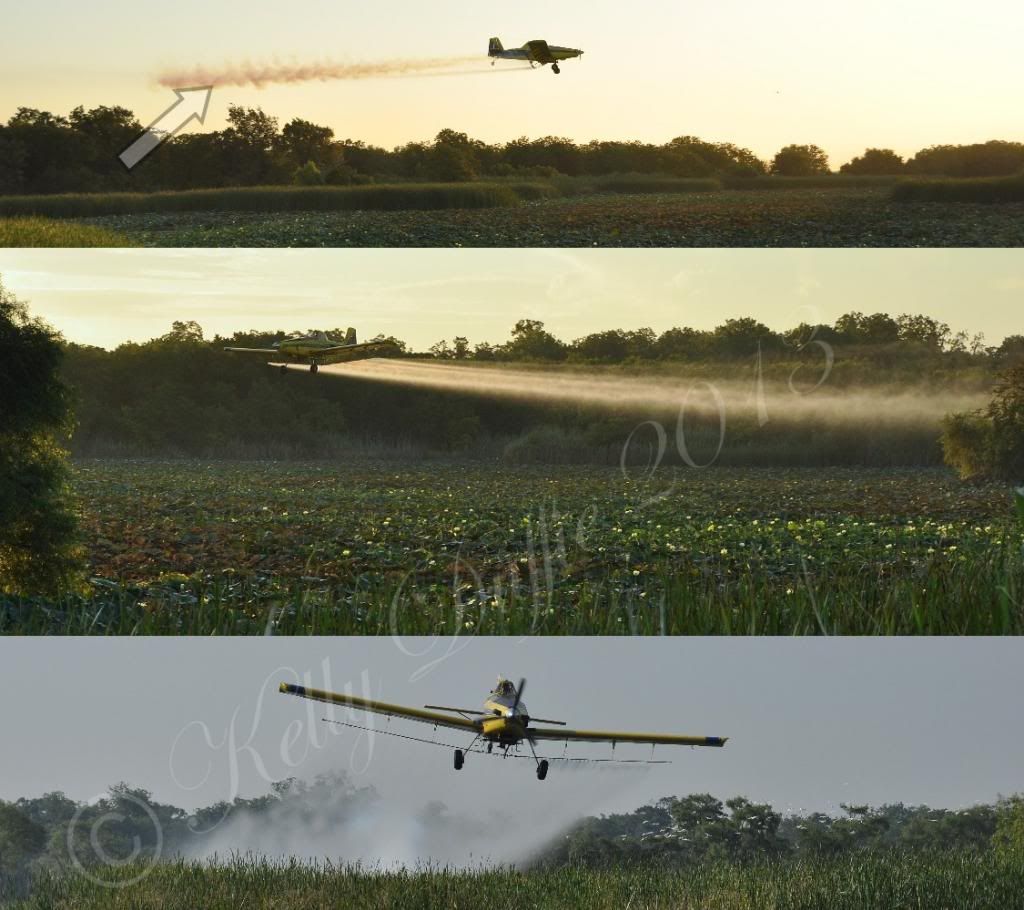Casual viewing doesn't reveal how much skill most aerial applicators possess, especially the ones who remain alive throughout their career.
Also, technology in equipment has advanced by leaps and bounds since the "old days".
For instances, most aerial applicators use GPS guidance to track their swath-paths, to ensure even coverage. A light-bar above the panel tells the pilot to slip left or right if he's slightly off course for each sequential swath. That's a big advance since the days of "flaggers" on the ground (usually high school kids), who held up flags to visually line up the pilot's approach.
Even the simple concept of a "smoker" (indicated by the arrow in the uppermost photo below) represents a huge advance toward drift-management. This device allows the pilot to "puff smoke" every few passes. The movement of the smoke - if any - conveys real-time wind conditions (speed, direction, etc). The first time I saw a smoker in use, I thought the plane's engine was about to throw a piston.
